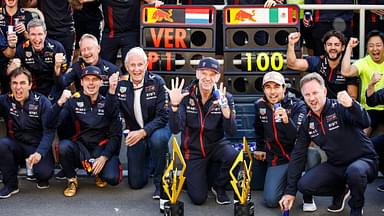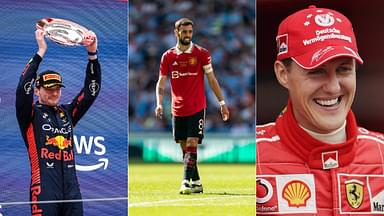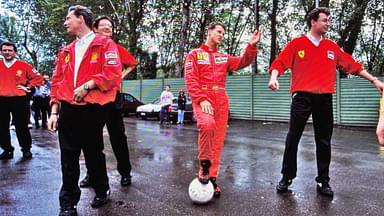We take a look at the meteoric rise of Raheem Sterling in English football.
Raheem Sterling has been receiving slandering from the media for a tattoo, flying on a private jet, flying on EasyJet, stay up late, and eating breakfast. When the media did the same for his teammate Tosin Adarabioyo, he raised his opinion on Instagram by comparing one academy graduate to another. The other one is Phil Foden, who is currently not able to break into the starting lineup despite being touted as a generational talent.
The young Jamaican saw his dad getting murdered in front of him at the age of two and had to fly 7500 kilometers to survive in life. His mother never found a permanent job and had to work on a permanent basis at multiple basis for survival. Despite going to school, Raheem Sterling shifted his attention towards football and started working his socks off on the field.
He joined the London outfit Queens Park Rangers at the age of 9 and did not disappoint. As years passed by, Raheem Sterling attracted interest from various clubs in England and opted to sign for Liverpool in 2010. Ever since his move, he was constantly in the frame of Kenny Dalglish who handed him over the debut in 2012.
Featuring for the senior side at the age of 17, he went on to make another three appearances during that season. New manager Brendan Rodgers implemented a youth philosophy and included Sterling in his starting eleven during the first part of the season, but the results did not fall kinder for the Irishman. Coupled with the results, the signing of Philippe Coutinho forced the Englishman to warm the bench for the remainder part of the campaign.
It was the vice versa during the next season. He found himself on the sidelines till November, thanks to the scintillating form of Daniel Sturridge and Luis Suarez. However, the injury to Philippe Coutinho meant that Suarez and Sterling would occupy both the wings, with the former Chelsea striker Sturridge starting up front. Rodgers struck to the same front line which favored the former Liverpool forward.
Starting 27 games that campaign, Sterling was able to muster out 11 goals and add another 12 assists to his name which enabled his side to challenge for the Premier League, although they felt agonizingly close. Raheem started as the center-forward after the departure of Luis Suarez, injury prone Daniel Sturridge and misfiring new signing Mario Balotelli.
He received plenty of criticisms for missing two to three glaring chances against Manchester United at Old Trafford. However, he bounced back with a great solo goal against Burnley on boxing day and added another two to his name before the conclusion of the season. The former Liverpool gaffer Brendan Rodgers was forced to tweak his formation upon the return of Daniel Sturridge. His expected goals and actual goals were on par this campaign.
Raheem Sterling was deployed as right full-back which clearly did not impress him. He submitted a transfer request and moved to the Blue part of Manchester for a fee of 49 million pounds which was then British transfer record. The Englishman scored 11 and assisted 10 including one in the semifinals of the League Cup to carry his side to the league cup finals where he beat his former side, Liverpool. He was varying between 0.25 during the next season too.
The change of manager at Manchester City saw a change in dynamism for Raheem Sterling. Pep Guardiola was keen to work with the English International at Bayern Munich, but the Reds demands of 50 million meant that the Bavarians did have the only option to walk away.
Manchester City started off the season brilliantly, but the fortunes crashed down once the fixtures started to take toil under Pep. Sterling made just 8 goal contributions in the last 24 games which forced the Spaniard to drop him for a couple of fixtures at the end. There was a little bit of improvement in finishing, but he was criticized for the same by others except his manager and teammates. Despite struggling for the rest of the season, he scored 10 and assisted 20 throughout the season. There was not much difference between the expected and actual goals.
Any Manchester City fan would remember the 2017/18 season which saw the Citizens breaking the 100-point tally in a single Premier League campaign. With the likes of Kevin De Bruyne, David Silva, and Bernardo Silva, there was no shortage of supply for the forwards. Sterling made 40 goal contributions, scoring 23 and assisting another 17 last term. The expected goal was 0.55 and the output was more than what was expected from him.
However, he has taken his game to another level this campaign. With two months of football left, Sterling has scored 19 and has found his teammates on 16 occasions. His absence has been felt so often because he completely gives a different dimension to the Manchester City attack. His outcome is 0.62 goals per game, whilst his expected outcome is just 0.57.
Raheem Sterling’s transfiguration is finally getting noted by the fans. For all the criticisms he receives, Sterling should be admired for silencing his critics.






